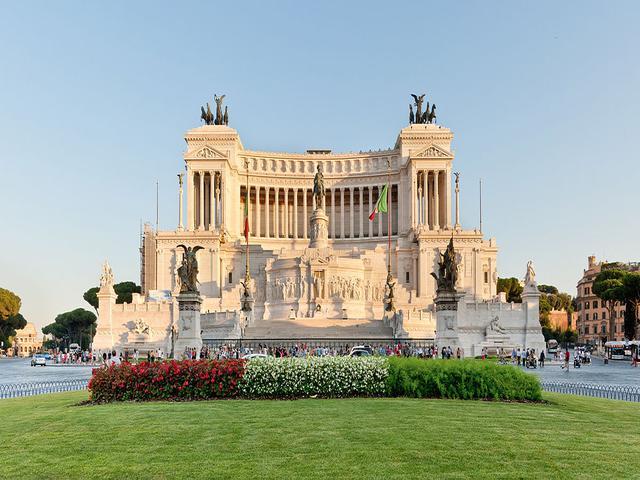The Victorian

The Altare della Patria, also known as the Monumento Nacional a Vittorio Emanuele II ("National Monument to Victor Emmanuel II") or Il Vittoriano, is a grandiose monument that stands as a symbol of Italian unity and patriotism. Situated in the heart of Rome, Italy, between Piazza Venezia and the Capitoline Hill, this monumental structure pays tribute to Victor Emmanuel II, the first king of a unified Italy. Designed by architect Giuseppe Sacconi in 1885, the monument's construction involved the collaboration of renowned sculptors from all over Italy, including Leonardo Bistolfi and Angelo Zanelli. The Vittoriano was inaugurated in 1911 and finally completed in 1925, becoming a significant landmark in the city.
The imposing Vittoriano features a striking blend of architectural styles, with its grand staircase, Corinthian columns, and intricate sculptures adorning its facade. At the center of the monument stands an impressive equestrian statue of Victor Emmanuel, flanked by two statues of the goddess Victoria riding chariots. The monument's sheer size is awe-inspiring, spanning 135 meters in width and reaching a height of 70 meters, or 81 meters when including the chariots and winged victories. With a total area of 17,000 square meters, the Vittoriano commands attention and admiration from all who visit.
One of the highlights of the Vittoriano is the Italian Unification museum located at its base, offering visitors a deeper insight into the history and significance of the Risorgimento, the movement that led to Italy's unification. In 2007, a panoramic elevator was added to the structure, allowing guests to ascend to the rooftop for breathtaking 360-degree views of Rome's iconic skyline. Inside the monument, visitors can explore the Institute of History of the Italian Risorgimento and the Central Museum of the Risorgimento, delving into the rich history and cultural heritage of Italy.
As a must-see destination for tourists in Rome, the Vittoriano stands as a testament to Italy's storied past and enduring spirit. Its monumental presence and historical significance make it a fitting tribute to Victor Emmanuel II and the unification of Italy. Whether admiring the intricate sculptures, ascending to the rooftop for panoramic views, or exploring the museums within, a visit to the Vittoriano offers a memorable and enriching experience for travelers seeking to immerse themselves in Italy's rich cultural heritage.
© ChatGPT 3.5
The monument contains the Tomb of the Unknown Soldier with an eternal flame, built under the statue of the goddess Roma after the First World War, following an idea by General Giulio Douhet. The body of the unknown soldier was chosen on October 26, 1921 from among 11 unknown remains by Maria Bergamas, a woman from Gradisca d'Isonzo whose only son was killed during the First World War. His son's body was never recovered. The selected unknown was transferred from Aquileia, where the ceremony with Bergamas had taken place, to Rome and buried in a state funeral on November 4, 1921.
The flags of the disbanded units of the Italian Armed Forces, as well as the flags of ships affected by the naval registry of the Italian Navy, are stored in the Vittoriano in the so-called Sanctuary of Flags (Sacrario delle Bandiere). The oldest flag on display is the flag of the 19th century Giuseppe Garibaldi frigate. When an Italian military unit is reactivated, its flag is taken from the Vittoriano and returned to the unit, which with the flag also receives the name, traditions and military honors granted to the flag over time.
The National Monument to Vittorio Emanuele II is one of the most striking buildings in the entire city. Its impressive dimensions and the view of the sun reflected in its white marble make it the subject of thousands of photographs taken by tourists every day.